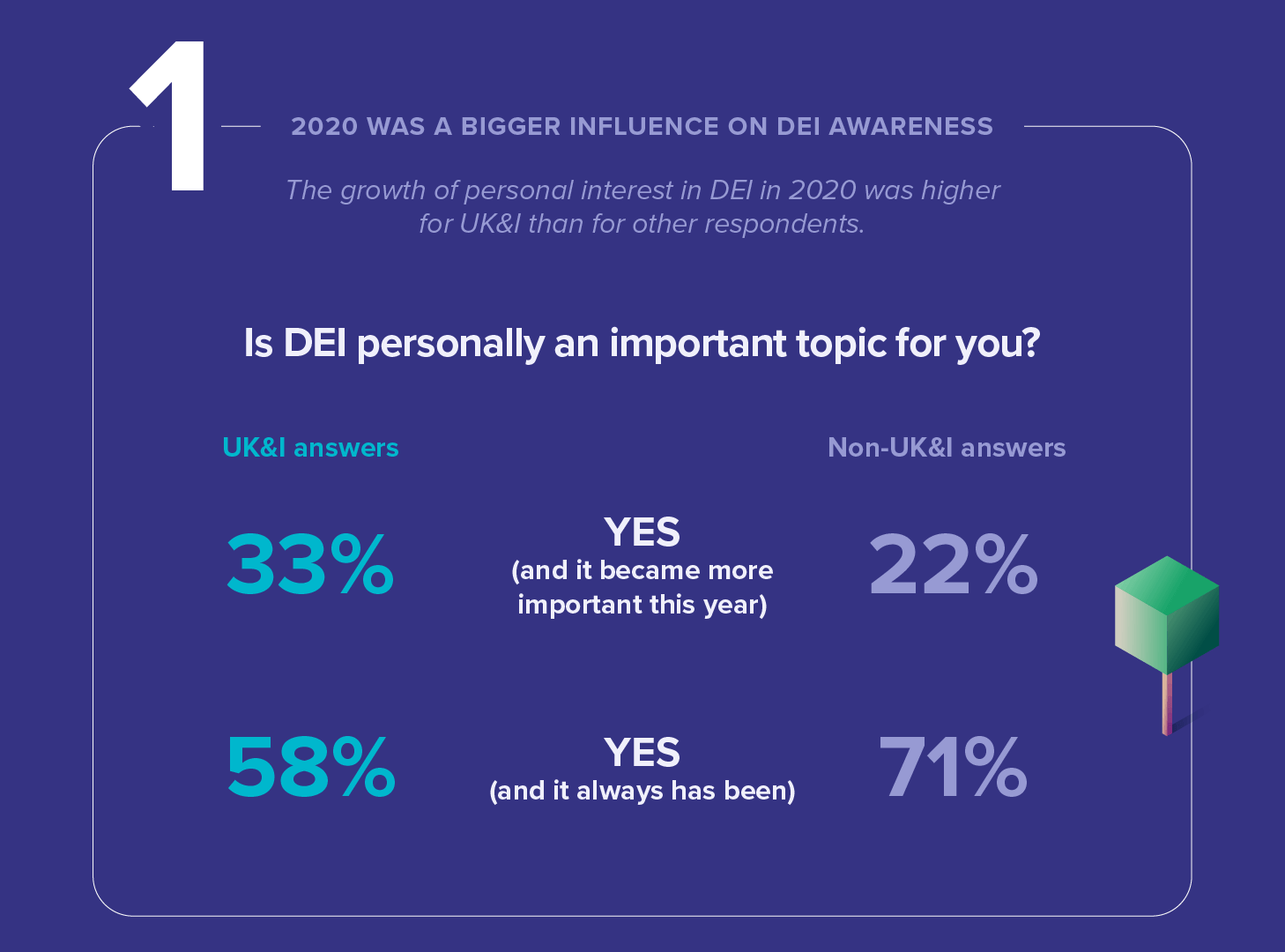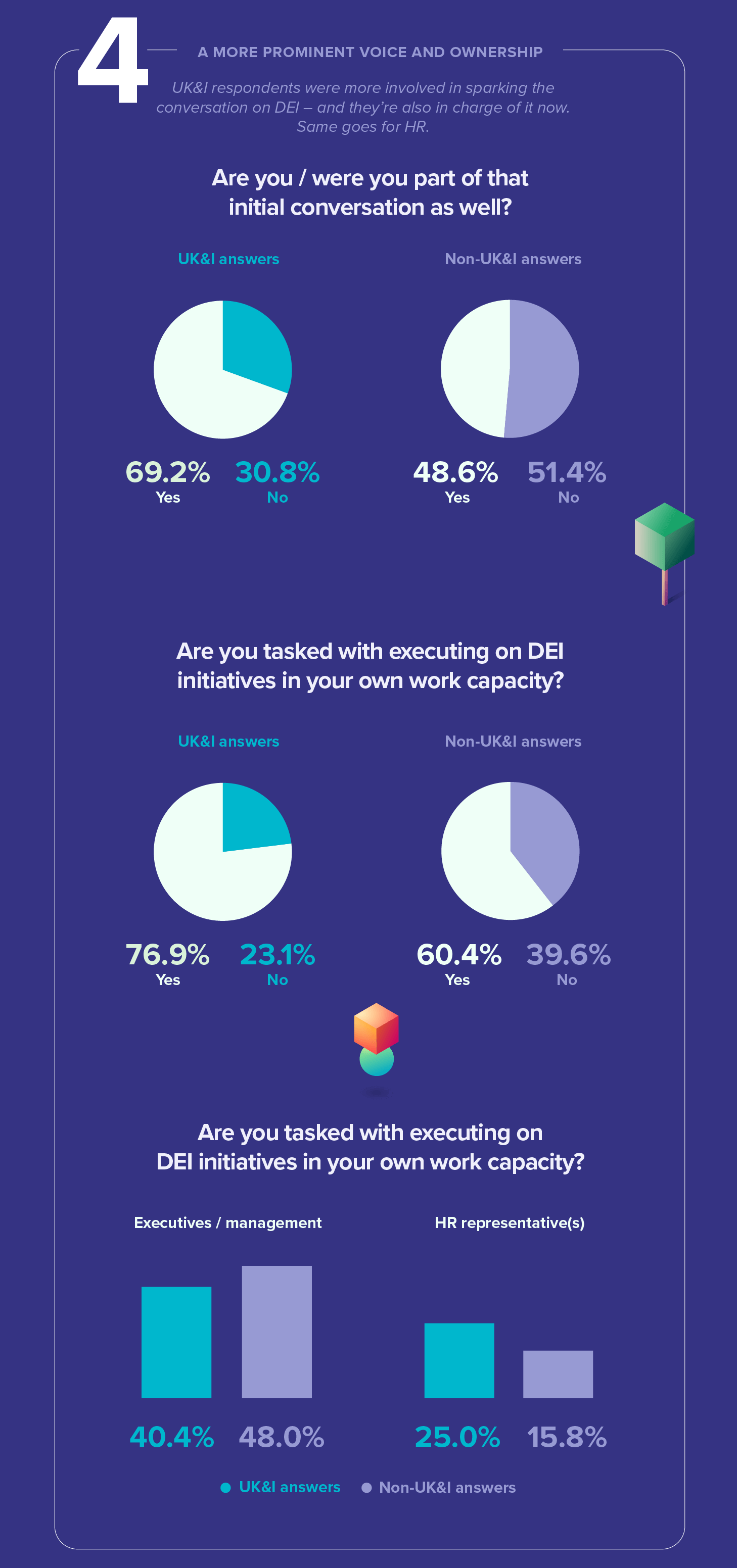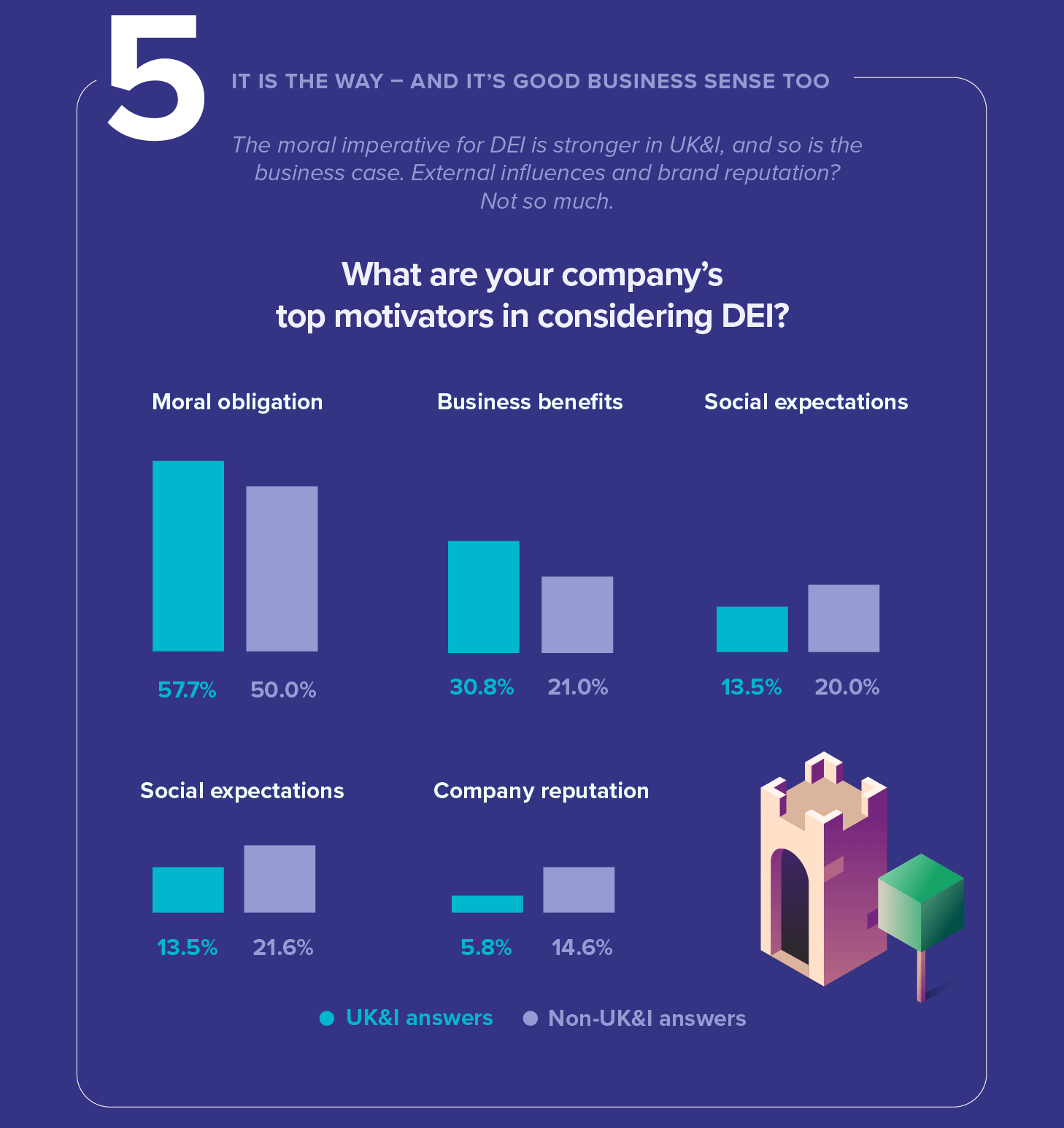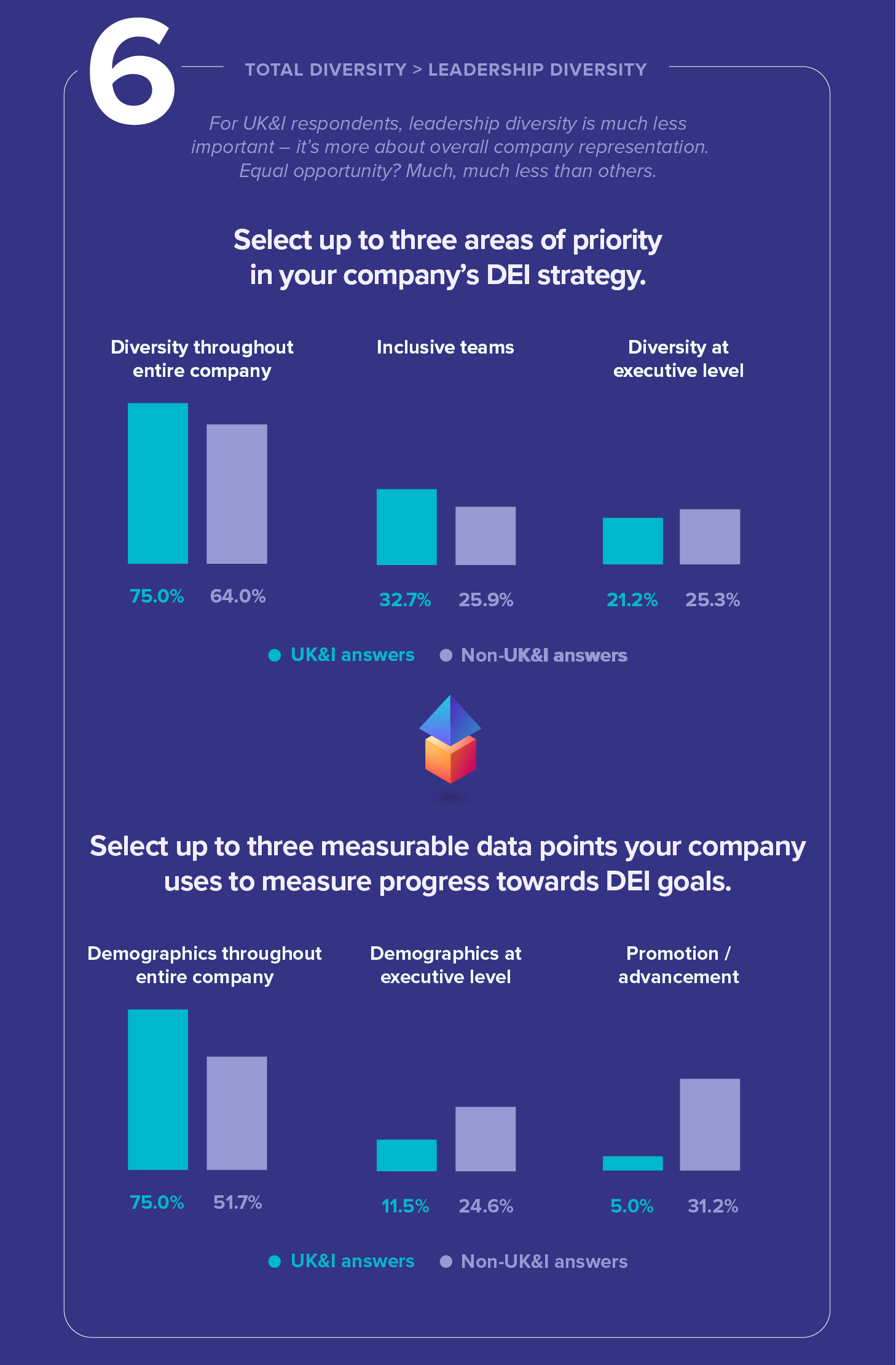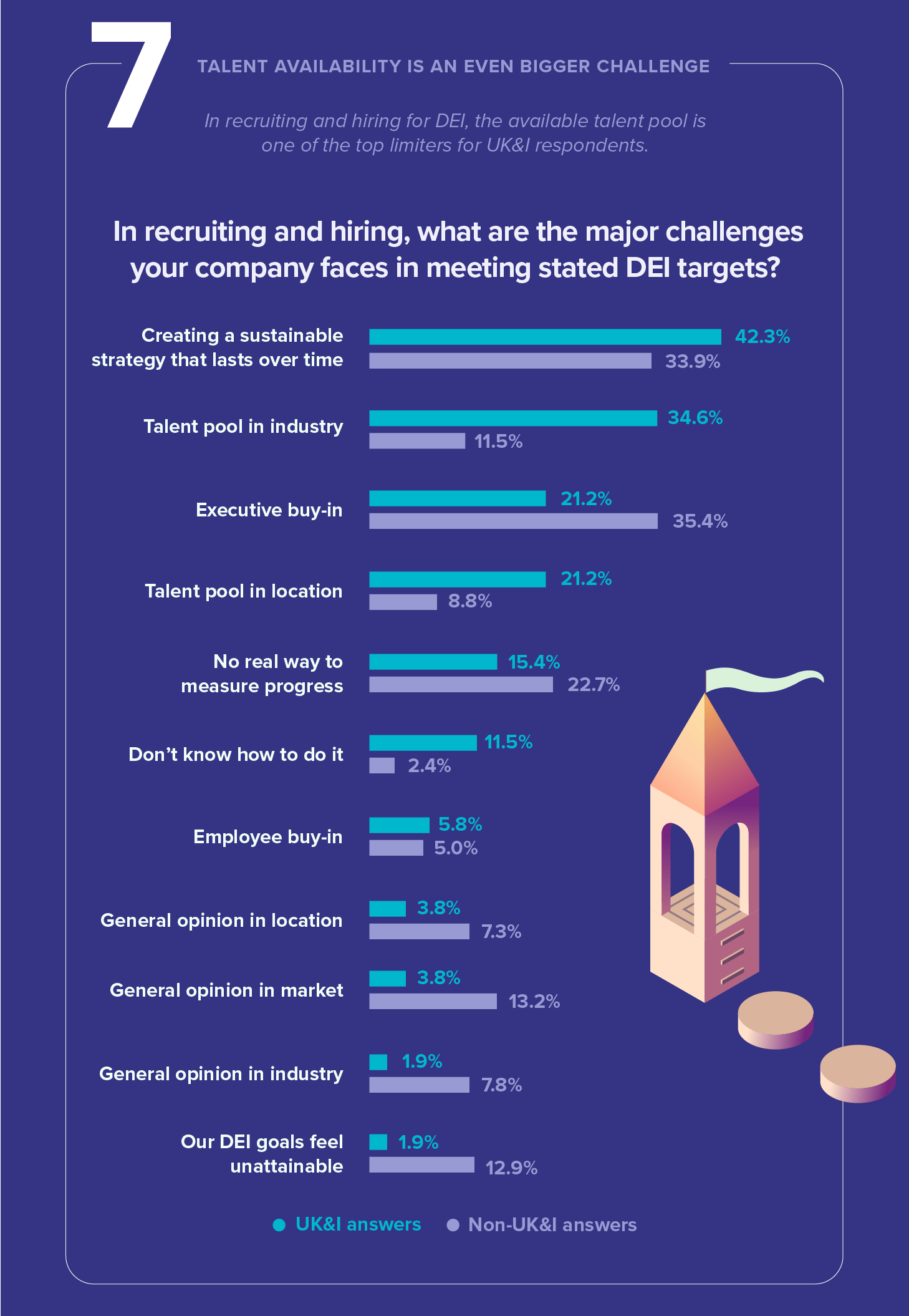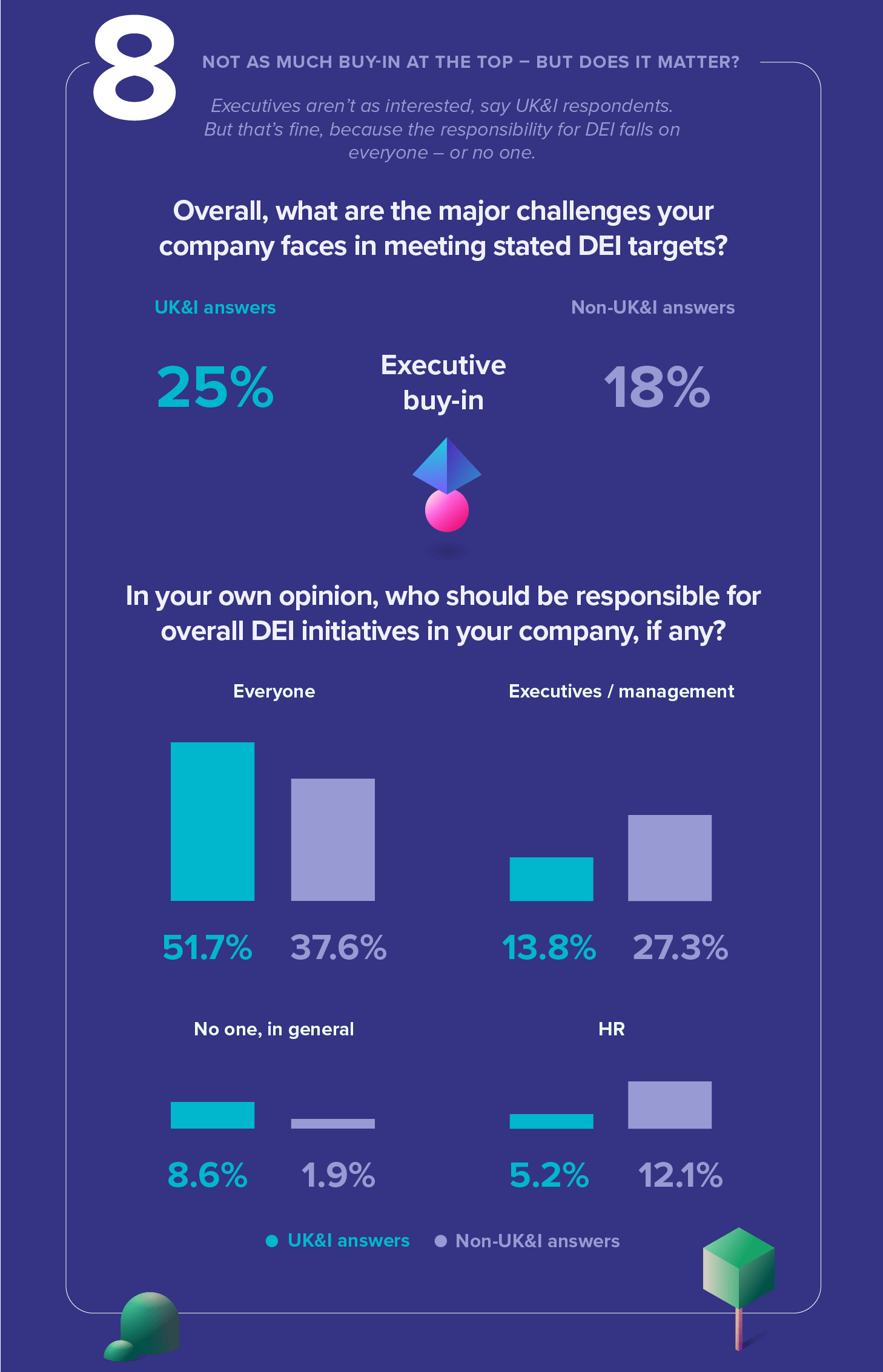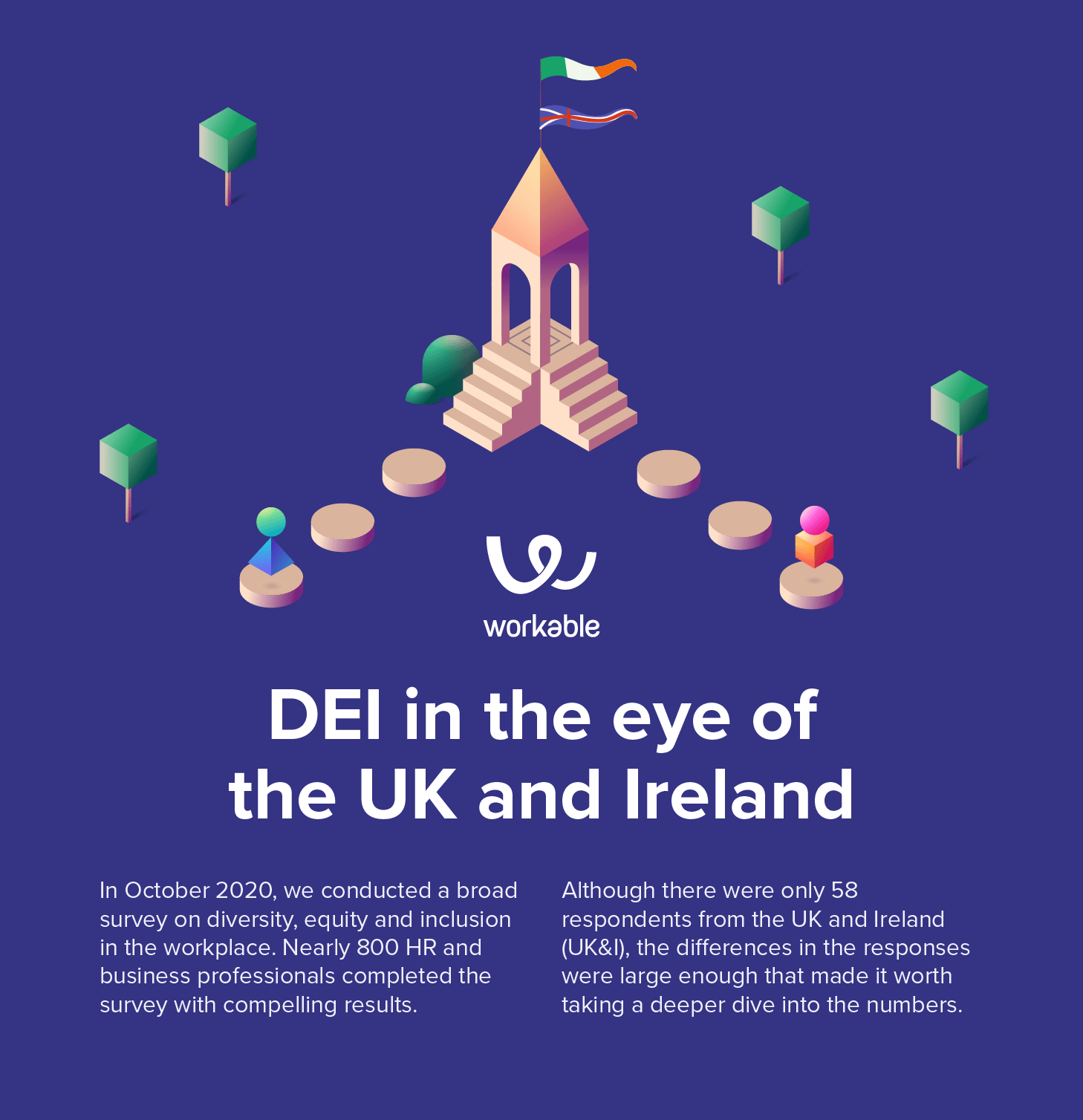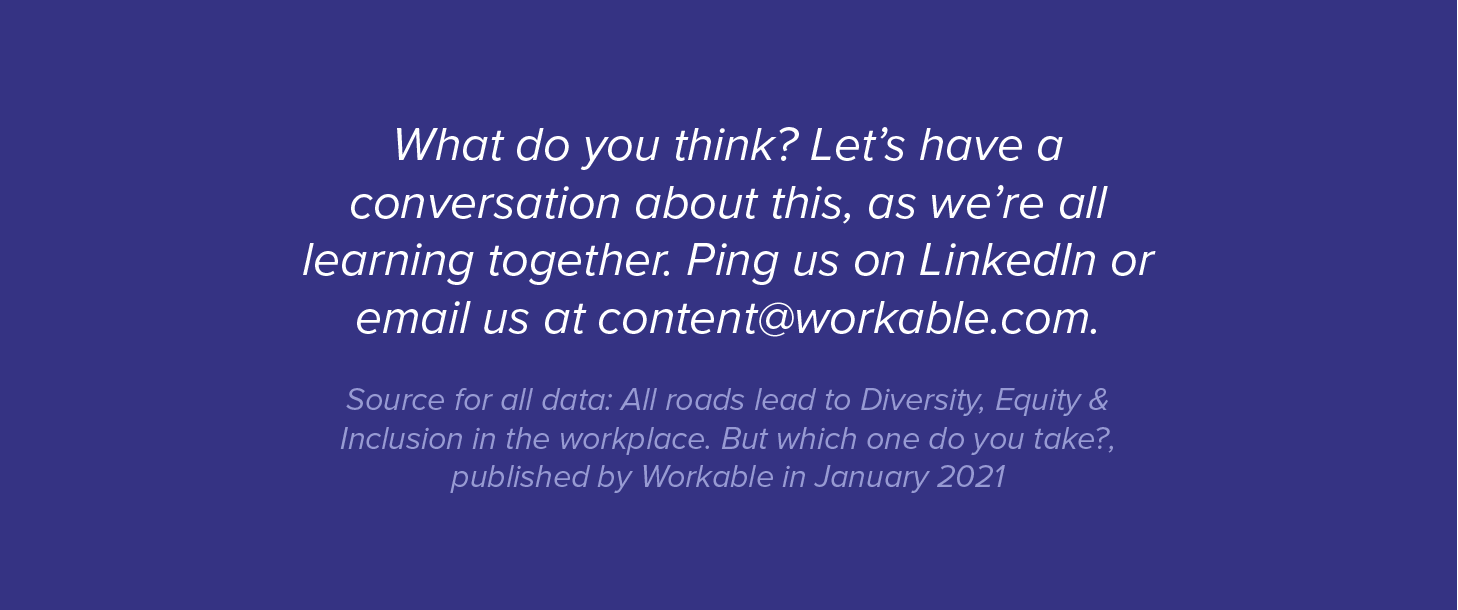DEI in the UK and Ireland: How is it different from other countries?
In October 2020, we conducted a broad survey on diversity, equity and inclusion in the workplace. Nearly 800 HR and business professionals completed the survey with compelling results.

Although there were only 58 respondents from the UK and Ireland (UK&I), the differences in the responses were large enough that made it worth taking a deeper dive into the numbers focusing on DEI in the UK and Ireland.
Jump to the full infographic – or download it for yourself here. For a deep dive, check out our full report on DEI at work.
We found eight major highlights for you on how UK&I compares with non-UK&I when it comes to DEI at work. Here they are:
1. 2020 was a bigger influence on DEI awareness
The growth of personal interest in DEI in 2020 was higher for UK&I than for other respondents, with 33% of UK&I respondents saying DEI became more important this year compared with 22% of non-UK&I responses. The opposite was true for respondents who answered that it always has been important to them, with 58% of UK&I respondents and 71% of non-UK&I saying it has always been important to them.
2. The will is stronger – but what’s the way?
UK&I respondents are more likely to say they’re interested but just don’t know how to go about it. When asked about the current state of DEI in their company, 15.5% of UK&I say they’re interested but don’t know where to start, compared with just 9% of non-UK&I.
When it comes to top challenges in meeting DEI targets in recruiting and hiring, 11.5% of UK&I respondents said they didn’t know how to do it, compared with just 2.4% of non-UK&I respondents. We saw similar differences when it comes to challenges in meeting overall DEI targets, with 17.3% of UK&I vs. 10.6% of non-UK&I saying they don’t know how to do it.
3. Progress? Not so much here
UK&I respondents are much more pessimistic in how they perceive DEI progress in their own company. Close to half (44.2%) of UK&I respondents said they don’t feel like their company is making meaningful progress in DEI, compared with one quarter (25.2%) of non-UK&I respondents.
4. A more prominent voice and ownership
UK&I respondents are more involved in sparking the conversation on DEI – and they’re also in charge of it now. Same goes for HR. A full 69.2% of UK&I respondents said they themselves were directly involved in that initial conversation, compared with 48.6% of non-UK&I.
Even more (76.9% vs. 60.4%) said they are tasked with executing on DEI initiatives in their work, and 25% vs. 15.8% said HR had initiated that conversation in their business.
5. It is the way – and it’s good business sense too
The moral imperative for DEI is stronger in UK&I, and so is the business case. External influences and brand reputation? Not so much. We learned that 57.7% of UK&I respondents said DEI is the right thing to do, compared with exactly half of non-UK&I respondents – and more cited the business benefits as a motivator (30.8% vs. 21%).
When it comes to social expectations (13.5% vs. 20%), company/brand reputation (13.5% vs. 21.6%), and current events and trends (5.8% vs. 14%), UK&I respondents are less likely to choose those as factors in DEI motivation.
6. Total diversity > leadership diversity
For UK&I respondents, leadership diversity is much less important – it’s more about overall company representation. Equal opportunity? Much, much less than others.
A full three quarters of UK&I (75%) picked “diversity throughout entire company” compared with 64% of non-UK&I, and fewer UK&I respondents (21.2% vs. 25.3%) picked “diversity at executive level” as a priority area in their DEI strategy.
Strikingly, when it comes to measurable DEI data points, just 11.5% of UK&I chose that as a target metric for progress compared with 24.6% of non-UK&I, and just 5% vs. 31.2% chose “promotion / advancement” as a metric. The latter is interesting, as it’s an indicator of equal opportunity in a company.
7. Talent availability is an even bigger challenge
In recruiting and hiring for DEI, the available talent pool is one of the top limiters for UK&I respondents. UK&I respondents said the talent pool in their industry (34.6%) and in their location (21.2%) were major limiters, compared with 11.5% and 8.8% of non-UK&I respondents respectively.
8. Not as much buy-in at the top – but does it matter?
Executives aren’t as interested, say UK&I respondents. But that’s fine, because the responsibility for DEI falls on everyone – or no one. One quarter of UK&I respondents cite executive buy-in as a major challenge to DEI targets, compared with 18% of non-UK&I.
And far more of UK&I (51.7% vs. 37.6%) say everyone should be responsible – and far less (13.8% vs. 27.3%) say executives / management should be responsible.
What do you think? Let’s have a conversation about this, as we’re all learning together. Ping us on LinkedIn or email us at [email protected].
Source for all data: All roads lead to Diversity, Equity & Inclusion in the workplace. But which one do you take?, published by Workable in January 2021

